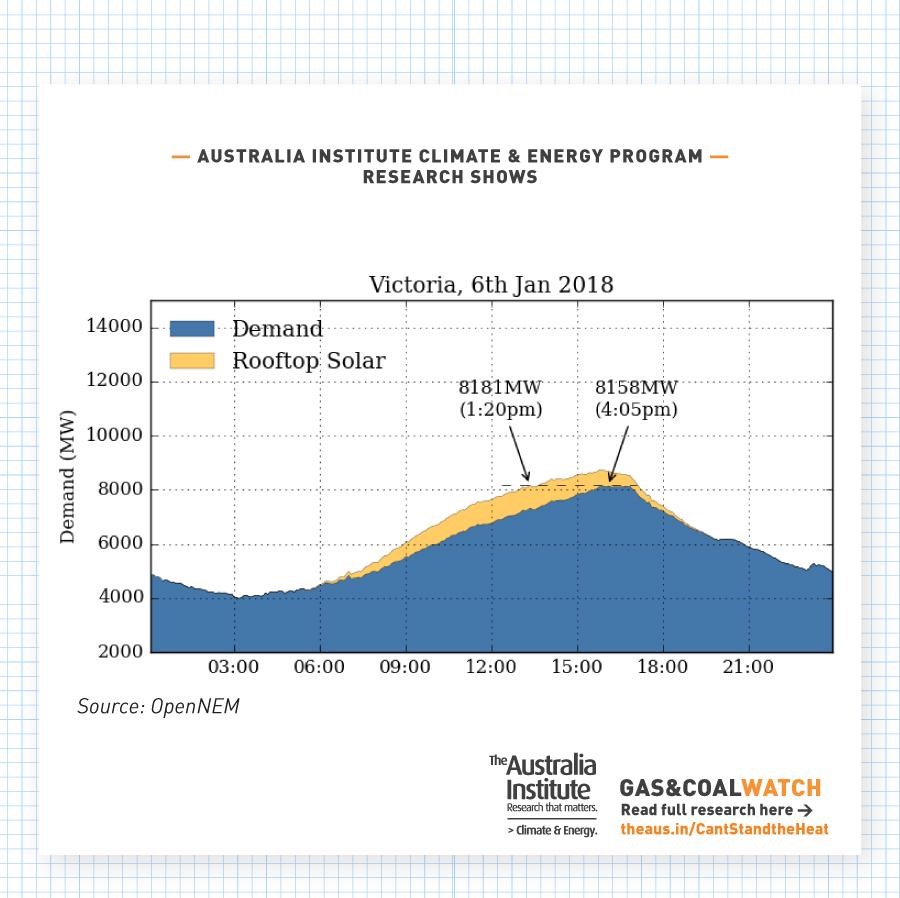4. Rooftop solar is reducing the strain on the grid
The growth in rooftop solar over the last ten years has been phenomenal. Victoria now has more than 1100 megawatts (MW) of small-scale solar panel systems, and they’re playing an important role in reducing peak electricity demand.
The graph below (from The Australia Institute’s Gas and Coal Watch) shows how, on a very hot day this January, Victoria’s rooftop solar:
- Reduced the highest point of peak demand from the grid (at 4pm) by almost 600 MW
- Delayed the moment of peak demand from the grid by almost three hours, meaning the grid was under strain for less time.

Source: The Australia Institute
This rooftop solar is also helping to reduce the cost of electricity by displacing expensive and polluting gas power stations.
Here’s how. To meet moments of peak demand, typically on hot summer afternoons, the grid normally requires peaking gas plants to fire up. These generators can turn on relatively quickly but are expensive to operate, and the costs flow through to consumers. Most of Victoria’s gas generators, for example, only run a few times each year when demand gets very high.
With more rooftop solar shaving off the high points of peak demand, there is much less need for gas peaking plants to turn on, or they will run for much less time. The upshot is fewer price spikes in the wholesale market, which helps lower average prices for consumers.